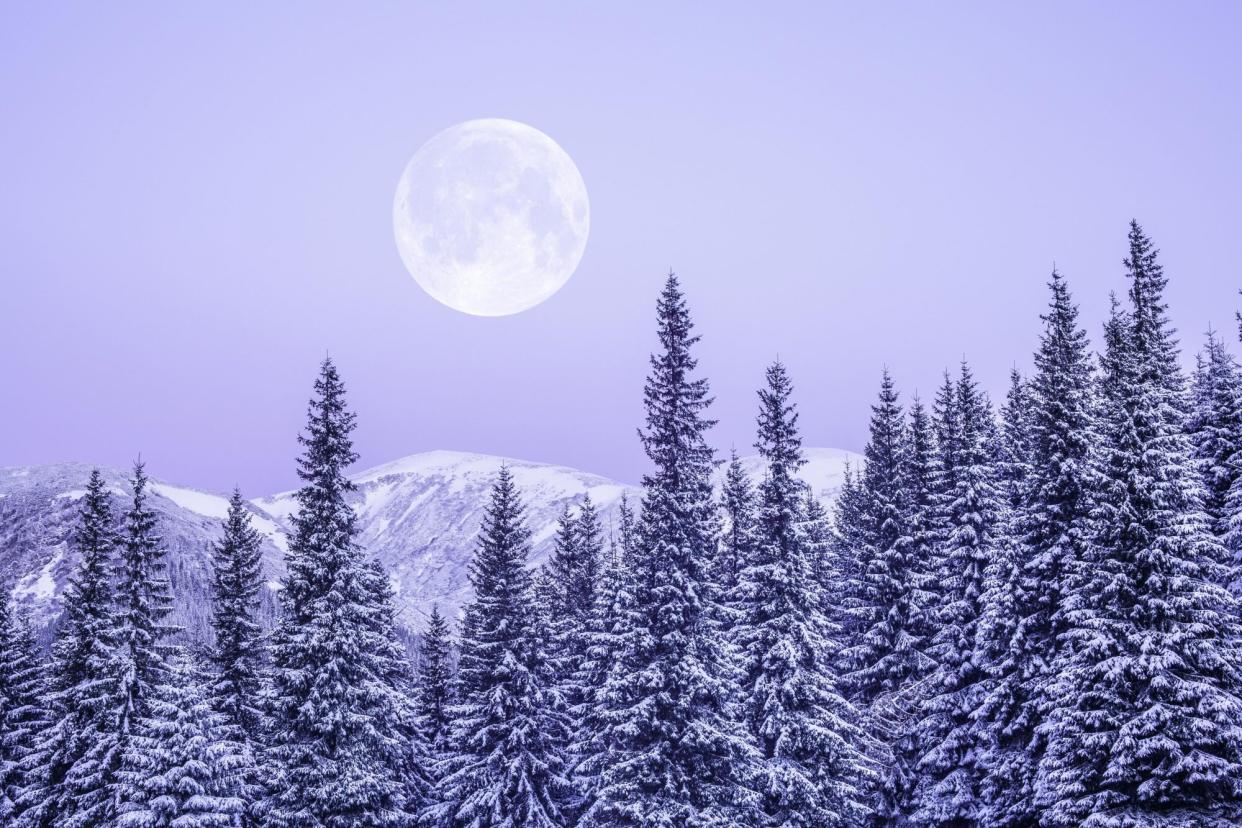The Final Full Moon of 2022 Will Peak This Week—Here's When to See December's Cold Moon

Misha Kaminsky / Getty Images
Look into the night sky this week and you'll spot the last full moon of 2022. This month's Cold Moon will turn full and reach peak illumination at approximately 11:09 p.m. EST on December 7, according to the Old Farmer's Almanac.
This full moon will look a little different from its usual white-gray hue. During the celestial event, the planetary object will appear orange. This phenomenon is called Raleigh scattering and occurs when long wavelength red light travels more easily through Earth's atmosphere than short-wavelength blue light, Forbes reports. The light strikes more particles and gets scattered, so the full moon is being viewed through a lot of atmosphere, causing it to appear orange.
Related: Researchers Have Discovered the First Interstellar Meteor to Ever Hit Earth
This won't be the only unique part about the Cold Moon—a lunar occultation of Mars will also occur on December 7. An occultation happens when the moon appears to move in front of another object, like a star, planet, or even an asteroid. The moon only occults a planet a few times each year and this month, that planet will be Mars.
The phenomenon will be visible to the naked eye for people living in the central, western, and southwestern parts of North America. The event will take place during the evening hours of December 7 as the Cold Moon rises into the night sky.
Though December's full moon is most widely referred to as the Cold Moon, it's also been given the moniker Long Night Moon. According to the Almanac, this is because the natural satellite rises during one of the longest nights of the year and is closest to the winter solstice. The name is also fitting because the moon shines above the horizon longer than most full moons.

